Bugging In: The #1 Ultimate Preppers Guide On How to Bug In
Bugging In should always be your preferred choice. If you’re like most people, the thought of an emergency situation or natural disaster leaves you with feelings of fear and dread. What would you do if suddenly there was no food, water, or shelter available to you? While it’s important to have an evacuation plan in place, it’s also crucial to know how to bug in – that is, how to make your home into a self-sufficient haven.
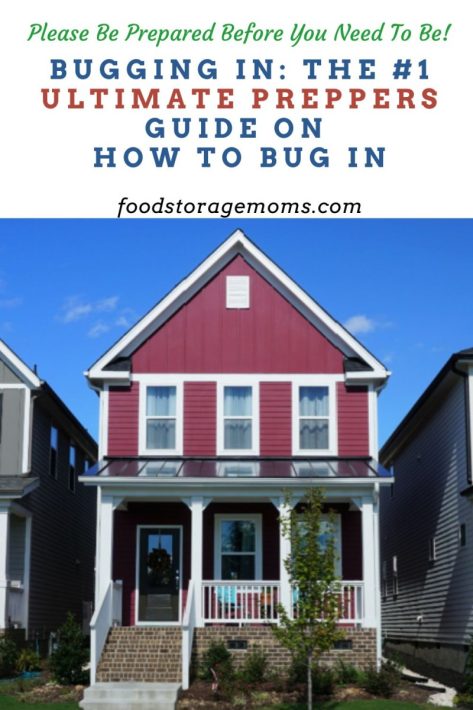
What is Bugging In?
“Bugging in” is the term for staying in your home during a disaster or emergency, rather than evacuating to a shelter or another location. For many people, bugging in is the best option, since it allows them to stay in familiar surroundings and avoid the stress of evacuating.
However, bugging in can also be dangerous, since you may be cut off from essential services like food and water. As a result, it’s important to plan carefully if you decide to bug in during an emergency. Make sure you have plenty of supplies on hand and know how to purify water and cook food without electricity.
In addition, it’s a good idea to have a backup plan in case bugging in becomes untenable. But with proper planning, bugging in can be a safe and effective way to weather any storm.
Reasons to Bug In First
There are a number of reasons why bugging in should be your first choice during an emergency.
For one thing, bugging in allows you to stay in familiar surroundings. This can be important both for your physical and mental health. When you’re bugging in, you don’t have to worry about finding shelter or orienting yourself in a new place.
In addition, bugging in can be less stressful than bugging out. When you’re bugging out, you may have to face dangerous conditions like bad weather or civil unrest. Bugging in, on the other hand, allows you to remain in the safety of your own home.
Finally, bugging in can be less expensive than bugging out. If you have to evacuate, you may have to pay for hotels or other accommodations. Bugging in, on the other hand, allows you to stay in your own home for free.
How to Bug In
If you’ve decided that bugging in is the right choice for you, there are a few things you’ll need to do to prepare.
Choose a Bug In Location in Your Home
The first step is to choose a bug in a location in your home. Keeping your entire house running in an emergency is inefficient, and it reduces your security.
Ideally, you should choose a location that is:
- Easy to fortify: Look for a location that can be easily barricaded, such as a basement or an interior room.
- Well-stocked: Make sure your bug in location has enough supplies to last for at least a week.
- Comfortable: Choose a location that is comfortable to stay in for extended periods of time.
Make Sure You Have Access to Water
The best way to ensure you have access to water is to stockpile it. A good rule of thumb is to have at least 1 gallon of water per person per day. For example, 200 gallons of water can last a family of 5 for approximately 40 days. Read my guide on How to Store Water For Drinking and Cooking for more information on how to stockpile water.
Stock Up on Emergency Food
Your bugging-in location should also be stocked with enough food to last for at least a month.
Canned goods are a good option since they have a long shelf life and don’t require cooking. However, make sure you have a can opener on hand, as well as some non-perishable food items such as granola bars or peanut butter.
In addition, it’s a good idea to have freeze-dried meals such as the ReadyWise Emergency Food Supply Make sure to have a bucket for each person in your household. I opted not to purchase meals because I enjoy cooking myself. But I get it, sometimes having a few buckets of food may work for some people.
Make Sure To Have Heat and Light
If you are bugging in during the winter, make sure you have a way to keep your bugging-in location warm. A wood-burning stove (outdoors one) is a good option, but you’ll need to make sure you have enough wood to last for at least a month.
In addition, it’s a good idea to have flashlights and candles on hand in case of a power outage. Make sure to have plenty of batteries on hand as well.
Finally, it’s a good idea to have a battery-operated radio so you can stay up-to-date on the latest news and weather reports.
Insulate Your Bug In Location
Once you have a heat source and lights, the next step in keeping your shelter warm will be to insulate it.
One way to insulate your bugging-in location is to use Reflectix. This material is designed to reflect heat, and it can be taped or stapled to walls and ceilings.
Use blankets and/or towels to seal the cracks underneath your doors and drape them over windows. Finally, make sure that everyone in your home has heavy blankets or a warm sleeping bag at night.
Have a Way to Deal with Human Waste
If you’re bugging in for an extended period of time, you’ll need to find a way to deal with human waste.
- Composting toilet: One option is to use a composting toilet. These toilets don’t require water or electricity, and they can turn human waste into compost that can be used to fertilize plants.
- Bucket toilet: Another option is to use a bucket toilet. This involves using a bucket as a toilet and then dumping the waste in a designated area away from your bugging-in location.
- Latrine: Finally, you can also build an outdoor latrine. This is essentially a hole in the ground that is covered with a sheet of plywood.
Secure Your Location
If there is a prolonged disaster, you will inevitably be subject to looters. As such, it’s important to secure your bugging-in location as much as possible.
- Fortification: One way to do this is to build a fortification. This can be something as simple as boarding up your windows and doors with plywood.
- Security equipment: Another option is to install security cameras and/or motion sensor lights around your property. This will deter looters, as they will not want to be caught on camera.
- Alarm: Finally, you should also have a security system in places such as an alarm system or a barking dog.
Read my post: How to Prepare Your House Against Looters for more information.
Add Fitness Activities and Games to Your Location
If you’re bugging in with family, it’s important to keep everyone entertained. This will help to prevent boredom and cabin fever.
One way to do this is to add fitness activities to your bugging-in location. This can be something as simple as setting up a makeshift gym in your garage or backyard.
Another option is to bring out board games or puzzles. This will help to pass the time and keep everyone’s mind active.
Finally, you can also use this time to teach your children (or yourself) new skills such as gardening or hunting.
When Should I Bug Out?
There are certain situations where bugging in is not the best option.
If your bugging-in location is in an area that is prone to flooding or wildfires, bugging out may be a better option.
In addition, if your bugging-in location is in an urban area, bugging out may also be a better option. This is because urban areas are more likely to experience crime and riots during a disaster.
Finally, if you don’t feel safe bugging in, bugging out may also be the best option. No matter what, it’s important to have a plan in place so you can bug in or bug out depending on the situation.
Final Word
Bugging in is a great option for those who want to be prepared for a disaster. By following the tips above, you can make sure that your bugging-in location is as safe and comfortable as possible.
Do you have any other tips for bugging in? Let me know in the comments below! May God Bless this world, Linda
Copyright Images: Two Story Row House AdobeStock_241421344 by PT Hamilton




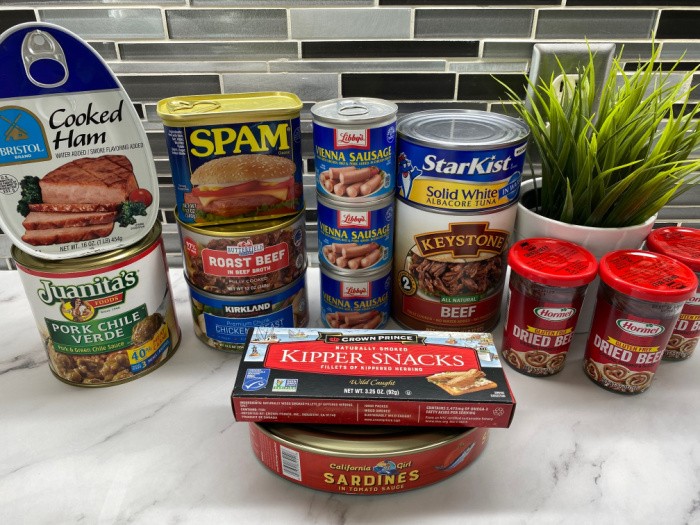
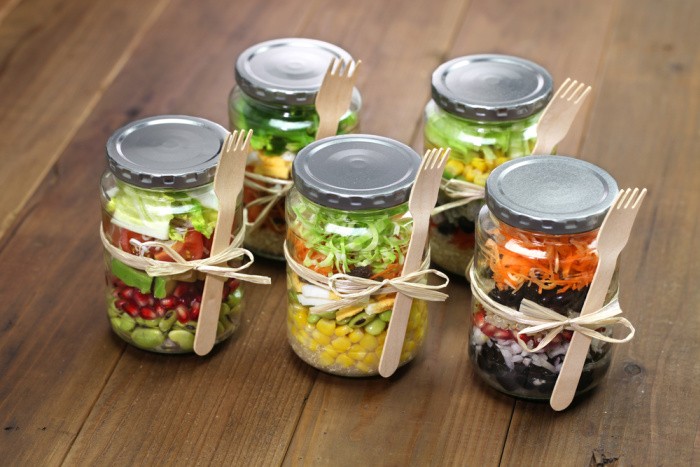
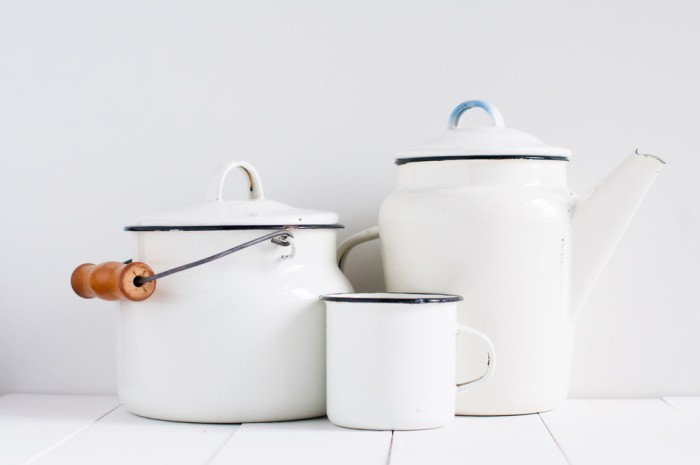

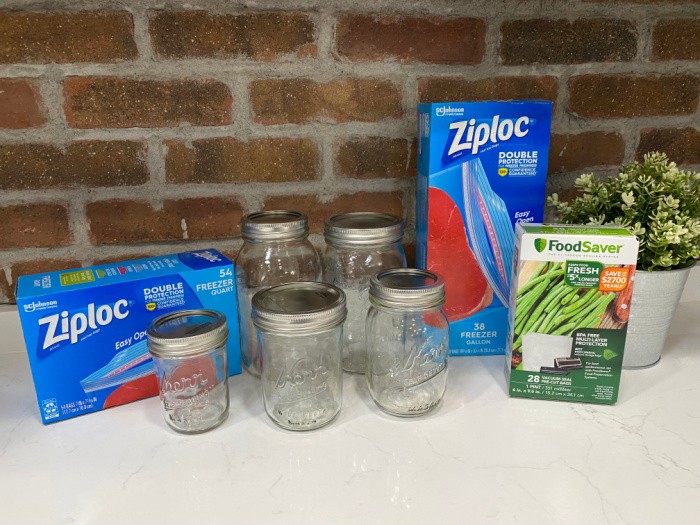













Our main preparedness is for bugging in. While there are other things that can happen, our main danger where I live are winter storms with power outages. We are prepared for that.
Hi Janet, that in itself is the best way to be prepared. You have a plan, you know I love hearing that! Good one! Linda
Fitness the Achilles heel of most “preppers”
I hear a lot about how folks are gonna filter water they collect long term bug in SHTF. Hope your collecting rain but most likely you’ll be going somewhere.
Hauling water may consist of 2 5gl cans and 1/4-1/2 mile. So 80lbs JUST in water not counting pack, weapon, ammo etc.
So Deadlifts and Farmers Carry are two good options to prepare for that task. The best option is the combination with a hex bar with 2 45s. You farmers carry it after lifting at least 30yds then do 5 deadlifts and stop for 15 seconds and repeat.
This will be more than enough to train your body to carry 2 5gl cans a distance.
Remember your exposed so someone is on overwatch.
If your think to yourself right now that Matt’s lost his mind and there’s no way I can do that then your option is access how much you have on hand and how you will collect it.
Gotta keep it real
Hi Matt, boy fitness is really the name of the game! You have not lost your mind, you have excellent tips and comments, my friend. I don’t think people realize how much water they use each day. Some may not even care to know. But we need a whole lot more water than most people think. Carrying it would be very hard. I get it, that’s why we need to have a plan in place. Linda
Matt, you lost your mind long ago, but that’s OK because we lost our minds also. LOL
Fitness is going to be the most dangerous part for us to bug in (and even worse to bug out.) I have some water stored but not enough. I am slowly working on that. I keep several gallon jugs with water in the freezer, mostly to use in case of power outages, but it can also be used for drinking or flushing the toilet. I don’t count that in my water total because reusing the distilled water jugs may cause them to leak.
I have easy to prepare food stored and probably enough for 3 months, although by the end of that time the combinations for dinner would be interesting.
Heavy duty garden carts are a great option for those of us getting a bit older. I have a cart that can hold up to 400 lbs of stuff, so it’s easy enough to fill a few 5 gallon containers and pull it home from the river. It was one of my early purchases, along with a small bucket to dip into the river to fill the larger containers.
That said, the recent drought in MA has me rethinking how much water I store in the LTS, since rivers and streams are MUCH lower than normal this year….so it’ll be harder to get enough “clean” water. Sigh.
Yup I use a deer cart myself. We’ve made trial runs.
I store and rotate annually 600gls.
Hi Matt, I had to look at Deer Carts on Google, I had no idea they make them. WOW! Linda
Yeah where I hunt there’s no motor vehicles allowed. So you gotta hump the deer out yourself. The cart helps especially if you put a couple down. It’s made to go over terrain and take a beating.
It works really well if you have two people.
Hi Matt, wow, that is so awesome! I’m glad you mentioned them! Linda
Hi DMWalsh, I agree, that our water sources are way down, and we can’t always count on the streams nearby. We must store water in our homes. I like the garden cart idea. Linda
Excellent article and comments. Bugging In should be everyone’s primary plan. One tip to make Bugging In easier is to form a mutual assistance group (MAG) with your neighbors, if possible. There is strength in numbers and if civil chaos erupts having other people to share the load in defending your area is critical. Also, different people have different skills. You may be a master gardener and a veteran who has experienced combat, but your neighbor might be an electrician, a plumber, a doctor, or have some other valuable skill. Good idea to get to know them.
Sandbags can help fortify your home against more than floods. Ask any grunt who fought from behind a sandbagged gun pit.
A great way to store water, especially if you have a lot of dehydrated or freeze-dried food stored, is to fill quart jars and keep them on your pantry shelves, or on the floor, next to the food you need them for. Just remember, even if you’re collecting rain water it needs to be filtered and purified. Rain coming off your roof could have bird droppings and dead insects in it.
And Matt hit the nail on the head regarding fitness.
Hi Ray, thank you, my friend! I totally agree on bugging in must be our first choice. I worry about being a target on the run. It’s not going to happen unless an earthquake or fire blows my house. A great tip for bottles of water, we can never have too much. NOW, is the time to store water more than ever before in our lifetime. Sandbags are a great idea! Yeah, we don’t know what’s going to roll off our food these days. We must have something to filter water. Great comment, Linda
One neighbor told me that if there is some thought that they would want to keep people from driving up to the house that he would fell his trees at the driveway entrance. That’s why he planted them at the entrance. After hearing that, we did that too, and the pines are now big enough that there would be no easy way up to our house without a chainsaw. If it’s not easy to drive up to your house, you will have less likelihood that you can be looted and folks drive off with your stuff. They will pick easier targets. So for security, I’d plant trees at your driveway entrance.
Hi Deborah, this is a brilliant idea! Thanks for sharing. Blocking our entrance would be awesome. Linda
Our recent experience with a water main break, taught me I didn’t have enough water for flushing needs. I know drinkable water can’t be stored in gallon milk jugs, but water and bleach for toilets is OK, right? For snow, ice and power outages we are prepared with a generator, water, food, blankets, candles, batteries and good books.
Hi Chris, as long as the containers don’t crack and leak they would be great for flushing toilets unless the sewer lines are severed. That’s why I have several options for emergency toilets, you can never have too many. Please store 10-gallon bags, kitty litter, and duct tape because they are my best friends along with the emergency toilets. Linda
Excellent article (as usual) Linda!
When my Mother passed away we kept her “bedside commode” (never used) for our preps. So much easier for seniors to use than trying to get back up from the bucket toilet!
Also I keep my (plastic) milk bottles (1/2 gallon), scale them well, fill them up with water than stock them up in the freezer. Keeps the freezer running better at full capacity, keeps the freezer colder longer if power is out and Voila – there is our toilet flushing water! Our grandaughter even keeps the bottles from her coffee drink for us. Much heavier bottle but still hold quite a bit and it doesn’t hurt that the bottles are square.
HI Cheryl, oh you are so lucky to have one of those “bedside” commodes. They are perfect for the elderly. Or anyone after surgeries. I like your idea of the frozen milk 1/2 gallon jug. It is smaller and easier to handle, love this! Great tips! Thank you, Linda
Great article & lots of wisdom in the comments. Fitness is ongoing challenge for senior senior citizens, but moving hay bales & bags of feed helps . We also have wheeled carts for moving larger items.
Bugging in is our preferred plan, although a Cat 5 hurricane coming directly to NW Florida would motivate us to move further inland to friend’s with the camper & all the critters. We’ve weathered Cat 4’s here, but once the winds go over 120 mph sustained… I’m a chicken!
I have recently moved 2 of my black rainbarrels away from the buildings & placed them out where only rain, no runoff water is collected. I would still purify & filter this before using for drinking or cooking, but those barrels should not have as many impurities as the barrels catching water off the roof. Dark colored barrels also don’t grow algae as readily as the white or light colored barrels do. I made the cement block pedestals the barrels sit on tall enough that 5 gallon pails can be easily filled. I have 1 near the house & 1 by the chicken pen. I will be putting 1 more out by the barn in case we need to water the goats.
Been busy harvesting elderberries & tomatoes. Have fall crop of regular potatoes in the ground & even have some volunteer potatoes coming up in 3 of the beds. Sweet potatoes are doing well & at least 2 of the Seminole pumpkin vines have finally decided to really take off. Have 2 new friends that are walking me through pressure canning. Much less scary to have someone available to show me or answer questions!
Hi BDN, I would be scared with a CAT 5 coming as well. I like your idea of having rain barrels away from the house. Good idea! If you pressure can the pumpkin be sure and do chunks, do not puree it. How fun to have a wonderful garden producing fruits and veggies! Having 2 new friends to walk you through the pressure canning process! It’s actually easy, you can do it! I keep my USDA canning guide by me at all times for the correct pressure. I love hearing they are going to help you learn how to pressure can! Linda
I see a lot of good ideas, strategies and planning here, but when it comes to bottled water I’m fine with it, but I consider two things when it comes to stocking up.
You can use the water refill machines at Walmart and Publix and fill your jugs that way. This water should be used for drinking and cooking and maybe keep some for medical use. I think it’s a waste to use potable water for other uses. It’s cheaper than buying your water 12 or 16 oz. at a time. And the machines will fill any size container, so you can fill what ever you need to fill. I used to fill 5 gallon drums, but honestly, those 2 and half containers are so much easier even for strong people. But we often have to use what we can get and at home the heavier jugs are fine as we can refill them from a smaller jug.
Tap water is fine for most of us and we can always add a little bleach or filter it for extra insurance that it is as pure as can be. And even not so great tap water or purified water from natural sources is good for washing equipment, clothing and bathing. We have a well and without telling a long story, we have had minerals and rust. A Brita filter would have helped, but we just buy bottled water now.
I’d like to setup a stand with drums or trash cans around the home to store rain water. It isn’t expensive or complicated and again, it allows the purified potable water to be reserved for drinking. For the small costs of PVC pipe, spigots, cans/drums and a platform you get gallons and gallons of free water. It’s smart to harvest rain water, so kudos to those who do.
We have carts, but I’d like one that rolls easily over grass and dirt to use for collecting sticks, twigs, pine cones and pine needles to use as natural fuel to fuel a cook stove. I’m in Florida so freezing in the winter is not an issue even when it gets down to 25 and 30 degrees. I can also compost what ever I pickup.
I have several pocket sized solar panels. They’re good, but you need a few. I’ve seen reviews of the Harbor Freight panels and while maybe not “the best”, they are easy to setup and not too bad for the price. I do have a few of their solar rechargeable battery chargers and according to some YouTubers who conducted some very good tests, they work quite well. I have not seen the solar chargers in a few years after I got mine. I’ve been using disposable batteries for years now, but may begin to switch over just in case they’re ever in short supply.
Hi Frank, isn’t it wonderful that we can take any container and fill them with water at various grocery stores? I love the idea of having drums and barrels to catch rainwater. I have some small solar generators that have gone bad. I need to replace them. We have to keep at it for sure. Linda
Bug-In topic rarely thought about deeply and even lesser discussed >>> covert cooking
If your plan is to cook on your BBQ in the backyard – think again – you’ll be lucky to boil water without half the neighborhood coming for some of that sanitized drinking water ….
When the hunger starts hitting hard around Day 10 – the human change starts also – the mentality to survive comes front forward – the various sense acuities sharpens >>> one, will be the sense of smell to anything survival oriented like food – try unmasked cooking day or nite and see what happens …..
Your plans definitely need to include indoor cooking and secreted food prep – hidden away from the regular kitchen – the regular kitchen in fact disguised to look like all the other desperately bare around the neighborhood ….
Secret to covert cooking will be the gathering of the smells and channeling them up and out of the house – above the ground level noses attached to the hungry >>> average home has existing rooftop exits with a chimney, waste plumbing and the older heating appliances – tap in and utilize
Hi Illini, that’s a great reminder about the smell of food cooking! I try to remind people that their barbecues will not be the best cooking device to use because they would use up so much propane. Day 10 will be very hard for those that did not prepare. Great comment as always, Linda
This article reminded me of what happened in areas around me the first summer of the pandemic. There were people who must have been reading up on bugging out, so they tried it, using campers and tents. Given their expensive gear, I’m sure they had nice homes which they left? I’m rural and we have a lot of small parks along our county and township roads. These people brought their tents, campers and set up house in these parks! These are parks with ball diamonds, swing sets, maybe a little picnic shelter. Usually have a Porta potty only. Maybe an outdoor faucet? These are Not camping parks. Porta potties were there but not being maintained. Any water faucets hadn’t been turned on. Yet, these people thought they should Bug Out there. It was ridiculous! I’m not sure why these people panicked enough to do this, but they certainly weren’t prepared for being away from home. Most had to be practically thrown off the parks by the sheriff office, even the DNR. Oh,the mess they left! Like you said, Linda, best is to be prepared to Bug In.
Hi Wendy, oh my gosh, what were they thinking??? I guess they were not thinking at all. It’s a shame they left a mess on top of it, good grief. I guess we are seeing a glimpse into the future when things get even harder. Wow, there are no words, Linda